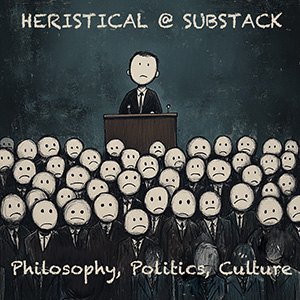
28 September, 2025
Review of What is Free Speech? A Dangerous Idea and Its History by Fara Dabhoiwala (Harvard University Press, 2025)
Until recently, the vast majority of people in liberal countries would have considered themselves supporters of free speech. But especially since the first election of Donald Trump and the Brexit vote in 2016, doubts previously restricted to minor crannies of academia and activism started to creep into the mainstream. The hopes which had once been pinned on the internet as a free marketplace of ideas and a tool for liberation were souring: now it was a ‘cesspit’ of misinformation and ‘hate’. Even so, the history of free speech is still largely remembered fondly, while contemporary political culture, fuelled by the internet, is deemed an aberration that calls for stronger measures.
Fara Dabhoiwala’s new book What is Free Speech? A Dangerous Idea and Its History challenges that cherished history. Fears about false information and libellous speech are nothing new, and not confined to our modern media environments. In the eighteenth century, a growing print industry made it hard for censors to keep up, and in the nineteenth John Stuart Mill worried about the “sheeplike addiction to modern media” among his contemporaries – both easily recognizable phenomena in the internet age. The historical arguments for free speech and their defenders are just as recognizable, he argues. Free speech “has always been a weaponized mantra, rather than a completely coherent concept” and those who argued for it were, then and now, little more than self-interested partisans.
Cato’s Letters, published by John Trenchard and Thomas Gordon from 1720 to 1723 – the first fully-fledged argument for political free speech – is first on Dabhoiwala’s chopping block. They were neither revolutionary nor interesting, he claims, but rather a half-baked, “fairly derivative” exercise, “cobbled together by two hacks on a deadline”. Trenchard and Gordon were not principled defenders of freedom of expression, but merely “peddling propaganda for their own strand of radical Whiggery”. Dabhoiwala leaves out the fact that in their lifetimes Algernon Sidney had been executed for an unpublished political work in that same tradition of radical Whiggery, kept in his desk drawer. “Scribere est agere” – to write is to act – said the judge.
But Trenchard and Gordon suffer from a more fundamental sin, in Dabhoiwala’s eyes: “Cato’s Letters is a male text – written by men, about men, for men.” John Stuart Mill’s On Liberty receives a similar treatment, though it is imperialism for which the author of The Subjection of Women is castigated: was it inconsistent that he advocated liberty for Englishmen, yet supported the subjugation of Indians in the British empire? The answer is of course that it may have been hypocritical, but it does not discredit Mill’s arguments about liberty that he would deny that liberty to some groups. The course of history thus far has expanded its reach.
This, however, does not satisfy Dabhoiwala. Amid the slew of character assassinations of the main historical proponents of freedom of expression lies his central contention that free speech liberals and absolutists downplay the potency of words. He levies this charge in particular at the libertarian reading of the First Amendment that emerged in the twentieth century, a “historical accident” based on a “wildly eccentric intellectual foundation”: “an archaic document drawn up more than two hundred years ago by violent rebel settlers deeply distrustful of governmental power and obsessed with individual liberty for propertied white men”. He attacks the “dogma of ‘content’ and ‘viewpoint’ neutrality” because there is no inbuilt regard for truth, and the refusal to take the “long- and short-term consequences of speech” into account, because it disregards harm. Both, according to Dabhoiwala, are based on the central modern conceit, that words should be considered distinct from actions: “words can leave deep and lasting scars. … [O]ur modern distinction between words and actions, and their supposedly different potency, is just a convenient myth.” ‘Scribere est agere’.
Remarkably, while he cites Salman Rushdie as a representative of free speech absolutism, he neglects to mention the high price Rushdie himself has paid for his speech. Between decades of living under police protection after the Fatwa issued by the Ayatollah, and being stabbed on stage in New York in 2022, it is not clear that Rushdie would agree with the characterisation of his position by Dabhoiwala as “convenient”: “it feels good to stand for freedom, and against censorship”. Free speech absolutism is considered an evasive, easy way out: “Those are all just ways of not having to think too hard about the real problems of speech, while simultaneously feeling morally superior.” From someone so worried about the effects of selective reporting to further writers’ personal aims, it is hard not to find his glaring omissions disingenuous.
Dabhoiwala is largely disparaging about the history of the American Civil Liberties Union (ACLU), especially their famous defence of the right of American neo-Nazis to march through Skokie, Illinois in 1977, which had a significant Jewish population, among them Holocaust survivors. He views this as self-evidently bad, a lamentable “conundrum” posed by the libertarian approach. But those who defended them were fighting a longer battle to bolster the distinction between abhorrent words and violent acts. Charlie Kirk, who was recently murdered because of his political speech, encouraged university students to challenge their political opponents in debate. His assassination could only be justified by those who believed that he had it coming for his ideas, those who had abandoned the distinction between speech and violence.
Despite Dabhoiwala’s assurances that the question is “not what … but how” to think about free speech, there were, and are, two fundamental approaches to free speech. There are those, like Dabhoiwala, who believe that the history of the rise of the public sphere is actually one of “the growing political influence of a deluded and hugely misinformed public” and that speech should be regulated on the basis of its content.They concede that speech regulations and excessive libel laws have their problems, but think that “perhaps that’s a reasonable price to pay for attending to the real world purposes and effects of speech in plural, democratic societies”. Anyone who defends the content-neutral approach is merely trying to distract from other issues “masquerading as clashes about speech rights”. Speech, like physical action, should be subjected to regulation, which should always consider “the question of truth, and the problem of harm”.
Then there are others, like Trenchard, Mill, Rushdie and the lawyers of the ACLU in the 1970s, who take the contrary view and defend the content-neutral conception of free expression. They argue that, in both law and our public culture, a sharp distinction must be made between speech and violence. Defending the speech of the Nazis marching in Skokie was not easy for the Jewish lawyers in the ACLU who did so. Salman Rushdie can hardly be accused of taking the easy way out. The modern idea of free speech might, as Dabhoiwala argues, be more fragile, historically incidental, and sui generis than sometimes assumed, but that doesn’t mean it’s any less worth fighting for. I know which side I’m on.
Felice Basbøll is a student in History at Trinity College, Dublin.

